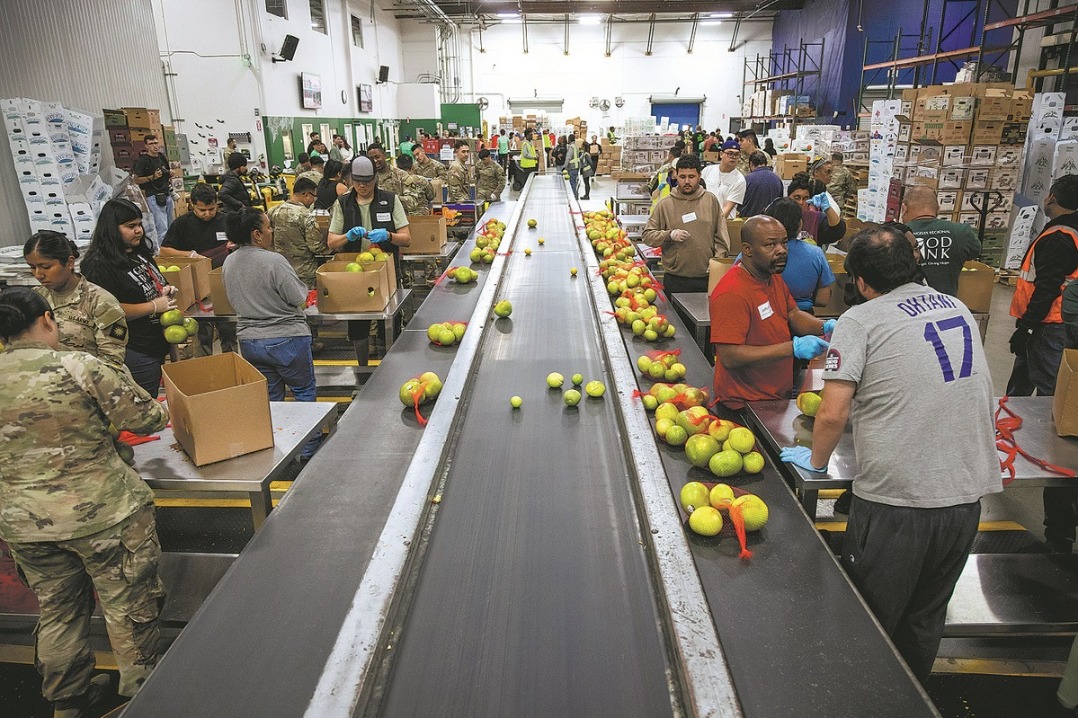AI transforming experience for foreign travelers in China
Technology creates bridge to local culture


Artificial intelligence is transforming travel experience in China, offering smarter and more personalized travel options, and acting as a "new guide" for foreign tourists exploring the country.
Mutangay Jesteben Beni, a 26-year-old visitor from the Democratic Republic of Congo and now a student at Shanxi University, experienced this firsthand. Seven years after arriving in China with dreams of becoming an engineer, his AI-assisted trip to Beijing this July completely reshaped his perception of Chinese tourism. "Plan a three-day trip to Beijing for me, focusing on the Great Wall and the Forbidden City, with a budget of around 5,000 yuan ($702)," Mutangay instructed Doubao, an AI application.
In less than 10 seconds, a detailed itinerary appeared on his screen, including transportation, accommodation, daily attractions, and local culinary recommendations.
"This is amazing!" he said, showing off the plan on his phone. "It's not just an itinerary; it's like a local friend offering a personalized guide."
Mutangay's experience is not unique. Increasingly, foreign tourists are relying on AI to explore China. Tools like DeepSeek and Doubao have become common companions for travelers, both domestic and international. According to a report released by the China Internet Network Information Center, as of August, China has registered 538 generative AI services and 263 generative AI applications or functions.
Mutangay's Beijing trip fueled his interest in ancient Chinese architecture, leading him to participate in the "Discovering Shanxi's Ancient Chinese Architecture" event last month, jointly organized by China Daily and Shanxi Daily.
Oluwabunmi Henry Jimoh, a 31-year-old vlogger from Nigeria and also an international experience ambassador for the event, shared his experience with AI-powered travel.
"In the past, I would usually search for interesting destinations on social media, but since using AI, everything has become much simpler," he said.
For Jimoh, AI acts as a helpful assistant. "It always reminds us of those easily overlooked corners and leads us to discover new routes. More importantly, it makes learning historical knowledge simple and efficient," he said.
Jimoh's connection with China began with his childhood fascination with Jackie Chan's kung fu movies. He arrived in China in 2016 to study at Guangxi University of Science and Technology in Liuzhou, Guangxi Zhuang autonomous region. After graduating, he chose to stay in Liuzhou and pursue a career in self-media. "Only after truly stepping into China did I realize that Chinese kung fu is not just about exciting fights, but also carries traditional etiquette, cultural heritage, and spiritual meaning," he said.
Reflecting on China's technological advancements, Jimoh said: "In recent years, China's technological development has been incredibly fast, and AI products have become integrated into everyday life. From service robots in hotels to various AI software applications, they are tangibly improving both life and work efficiency."
Veldesen Yaputra, a 24-year-old Indonesian architecture student at Tsinghua University, also experienced the allure of AI firsthand.
At the Jinci Museum's Shengmu (Sacred Mother) Hall in Taiyuan, he witnessed the unique charm of "technology plus ancient architecture".
By using Doubao's visual recognition function to scan the building, the AI system instantly identified it as Shengmu Hall, providing detailed information about its historical background, structural features, and cultural value. "Now, whenever I encounter unfamiliar ancient architecture knowledge, I can easily access it through this tool, as if I have a professional 'ancient architecture guide' with me," said Yaputra, impressed by the clear information on his phone.
Yaputra's original reason for coming to China was to "find his roots". His ancestors were from Jieyang, Guangdong, and he is the fifth generation of his family in Indonesia.
"As a Chinese descendant, I have a responsibility to spread Chinese culture overseas," he said.
He now has a new understanding: "To judge a country's development, you can get a direct impression by looking at the planning details of its cities and the design standards of its buildings."
Karyna Kovalevska, a 24-yearold Ukrainian vlogger and participant of the event, leverages AI extensively as a short video content creator. She uses AI to create travel guides and consults with AI when preparing scripts for her videos on Shanxi's ancient architecture. "This not only helps me avoid historical and cultural inaccuracies but also greatly improves my creative efficiency," she explained. "AI provides more authentic expression suggestions for my narration and even offers professional inspiration for video camera work and narrative logic."
Through this cultural journey, Kovalevska has also keenly observed the progress of the integration of China's cultural tourism industry with technology. "The tour guide services in scenic spots are becoming more professional, and digital and AI-powered intelligent equipment is becoming more prevalent, significantly enhancing the experience for foreign tourists," she said.
She believes that thematic activities like "Discovering Shanxi's Ancient Chinese Architecture" are of great importance in promoting Chinese and foreign cultural exchanges.
With the implementation of China's 240-hour transit visa-free policy, more foreigners have the opportunity to experience real life in China. "I believe that foreign tourists can only truly understand China by personally visiting this land. And AI will become an important bridge to help us better understand Chinese culture," she said.
Ding Yi and Guo Shuya contributed to this story.


Today's Top News
- Beijing hopes COP30 will address concerns of developing nations
- China, US seek to stabilize trade relations
- Li: CIIE a key bridge linking China, world
- Pacts epitome of South-South cooperation
- Dutch govt should act responsibly to resolve trouble of its own making: China Daily editorial
- Shenzhou XX crew's return trip delayed due to space debris risk






























